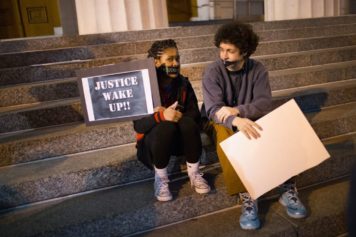
President Barack Obama became the first sitting president to visit a federal prison while filming a special for HBO’s “Vice”.
The White House announced Friday plans to invest millions in education grants and work training programs as part of the Administration’s ongoing efforts to reform the U.S. criminal justice system.
President Barack Obama has devoted the majority of his last year in office to addressing the societal problems brought on by mass incarceration in the 80s and 90s.
The latest roll out aims to reduce rates of recidivism by equipping the prison population with tools for successful reintegration into society.
The standout initiative is the Second Chance Pell pilot program, which will give roughly 12,000 inmates the chance to earn two-year and four-year college degrees. Thanks to a $30 million expansion, the Pell grant will be available to state and federal prisoners for the first time in 22 years.
Clinton’s 1994 Violent Crime Control and Law Enforcement Act put an end to the use of Pell grants for prisoners. Supporters argued that it was unfair to dispense grant money to convicts when so many college students were struggling to pay tuition. The policy still stands, but the U.S. Department of Education has sidestepped the ban through a special provision of the Higher Education Act, allowing officials to distribute funds to institutions acting as “experimental” sites.
Now eligible inmates – especially those scheduled for release within five years – can receive up to $5,815 in grant money from the 67 post-secondary institutions pre-selected by the Education Department. Colleges and universities have partnered with over 100 correctional facilities to offer online and classroom-based-instruction.
“Promoting the education and job training for incarcerated individuals makes communities safer by reducing recidivism and saves taxpayer dollars by lowering the direct and collateral costs of incarceration,” Education Secretary John B. King Jr. said in a statement. “The knowledge and skills they acquire will promote successful reintegration and enable them to become active and engaged citizens.”
King referenced a 2013 RAND study, which found that detainees who participate in educational programs were 43 percent less likely to return to prison within three years and that every dollar spent on educating prisoners saves about five dollars in incarceration costs.
An additional $31 million in grants will go to organizations committed to intervention programs aimed at young adults aged 18 to 24, including apprenticeship. And $21 million will go to educational and workforce training for those in state or local work release programs.
Other measures include special funding for specialized career centers that operate within prisons, mentorship and training programs for youths at risk of dropping out of high school, and housing support for the homeless and recently released.
And finally, the Justice Department will introduce a host of policies to protect the children of incarcerated parents.
Members of the administration further discussed the changes in a conference call with reporters Thursday.
“”The bottom line is that our communities are less safe when the stigma of incarceration prevents Americans from truly ever shedding their prison jumpsuit,” White House senior adviser Valerie Jarrett said, per Reuters. “When people leave prisons and can’t turn their lives around, they too often end up back behind bars,” she added.
“We’re squandering an opportunity by not giving people with a criminal record a second chance,” Secretary of Labor Tom Perez told reporters in the conference call, according to Fusion. “Why wait for inmates to be released to give them the support they need to enter the workforce?”


